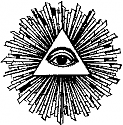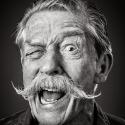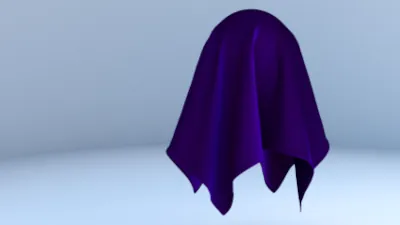Digital humans the art of the digital double
Ever wanted to know how digital doubles are created in the movie industry? This course will give you an insight into how it's done.
#
1
16-07-2010
, 09:27 AM
Registered User
Join Date: May 2008
Join Date: May 2008
Posts: 245
How to create this Texture? bumpmap or normal?
I came cross very nice texture that impress me to make it, I tried some way but its looks bit flat, I mean the floral vector are flat, doesn't look bumpy, that is why I need your opinion and Advice, what is the best to create this kid of texture, bumpmap or Normal map? I do have the texture and how do I create the bumpmap from the texture? is just Grayscale enough? Need bit of ur help
if you know something plz say something. otherwise one link should be enough....
REgards
#
2
16-07-2010
, 10:15 AM
"No pressure, no diamonds" Thomas Carlyle
#
3
16-07-2010
, 03:05 PM
https://www.crazybump.com/
...their site seems to be down tho.
#
4
16-07-2010
, 09:05 PM
Registered User
Join Date: May 2008
Join Date: May 2008
Posts: 245
Anyone here knows how to create right bumpmap or how can you tell its right bumpmap for the texture? is just grayscale enough or do I need more tweaking?
Crazy bumpmap is down, plus they don't have Mac version.
any other idea?
please link or any suggestion.
regards
#
5
16-07-2010
, 09:09 PM
EduSciVis-er
Join Date: Dec 2005
Join Date: Dec 2005
Location: Toronto
Posts: 3,374
#
6
16-07-2010
, 09:22 PM
Registered User
Join Date: May 2008
Join Date: May 2008
Posts: 245
thanks for replay, well if you look at the image its very easy to tell which area should be up or bumpy. basically the brown area is flat and the flora flowers are bumpy, so I need to more focus on flowers.
regards
#
7
16-07-2010
, 09:31 PM
Registered User
Join Date: May 2008
Join Date: May 2008
Posts: 245
regards
#
8
16-07-2010
, 09:58 PM
EduSciVis-er
Join Date: Dec 2005
Join Date: Dec 2005
Location: Toronto
Posts: 3,374
Hope that helps.
#
9
16-07-2010
, 10:34 PM
Registered User
Join Date: May 2008
Join Date: May 2008
Posts: 245
any more idea guys?
regards
#
10
16-07-2010
, 10:48 PM
#
11
16-07-2010
, 10:54 PM
Registered User
Join Date: May 2008
Join Date: May 2008
Posts: 245
#
12
17-07-2010
, 09:41 PM
Values for either bump or displacement should be around 20 - 30 percent. Jusst play with the setting until you are happy.
cheers
J
#
13
18-07-2010
, 02:37 AM
Bump map: Has position (X Y), and amplitude (black->white).
Advantages: Quick to make, quick to render.
Disadvantages: Can create banding if pushed too high. Pushes the pixels of the shader around. Does not actually move the geometry. Can not be seen from the side of an object. (Ex. The effect is lost if the camera is not face on)
Normal map: Has position (X Y), and surface normal orientation (X Y Z) mapped to R G B.
Advantages: Fast to render. More precise than bump maps.
Disadvantages: Need certain software to create the maps. Does not actually move the geometry. The surface normal in the lambertian equation (the lighting model) is changed corresponding to the normal map. Can not be seen from the side of an object.
Displacement map: Has position (X Y), and amplitude (black->white).
Advantages: Moves the geometry. Can be seen from the side.
Disadvantages: Slow to render. Sampling settings can be high. Can create banding if pushed too high.
You can also use a combination of the different maps. Many people create mid-resolution displacement maps, then use normal or bump maps to add in the fine detail.
Imagination is more important than knowledge.
#
14
18-07-2010
, 04:06 AM
Registered User
Join Date: May 2008
Join Date: May 2008
Posts: 245
guys ...please more links and Advice..
regards
#
15
18-07-2010
, 08:59 PM
1) Desaturate the image.
2) Adjust the levels so that you pop the flowers from the background.
3) Duplicate that layer, and run a highpass on it. Make sure it only has the high-frequency detail in it.
4) Set this layer to multiply. Adjust the opacity of this layer so it adds the high frequency detail onto the lower layer.
5) Merge these layers together.
6) Take the dodge and burn tools, and manually paint in the rest of the height detail.
Making a bump/displacement map isn't an automatic process. You have to work at it.
Imagination is more important than knowledge.
Posting Rules Forum Rules
Similar Threads
normal map and uv map 2011
by omegaend in forum Maya Materials & Textures replies 6 on 01-02-2011
Alternative to the ramp texture node question
by rebirth34 in forum Maya Basics & Newbie Lounge replies 2 on 29-01-2011
normal map texture?
by Mayastatic in forum Maya Materials & Textures replies 0 on 14-09-2007
Texture upload
by Protheus in forum Maya Basics & Newbie Lounge replies 9 on 25-01-2004
painting on model to create texture template?
by maya4todd in forum Maya Basics & Newbie Lounge replies 7 on 17-01-2004
Topics
Free Courses
Full Courses
VFX News
How computer animation was used 30 years ago to make a Roger Rabbit short
On 2022-07-18 14:30:13
Sneak peek at Houdini 19.5
On 2022-07-18 14:17:59
VFX Breakdown The Man Who Fell To Earth
On 2022-07-15 13:14:36
Resident Evil - Teaser Trailer
On 2022-05-13 13:52:25
New cloud modeling nodes for Bifrost
On 2022-05-02 20:24:13
MPC Showreel 2022
On 2022-04-13 16:02:13











